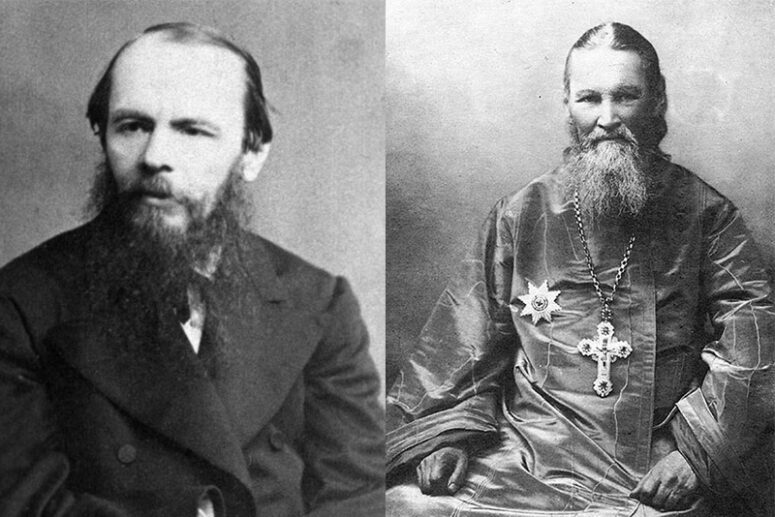
For most Orthodox believers, Fyodor Dostoyevsky and Saint John of Kronstadt are familiar names. The former is known for his incisive novels exploring every detail of the human soul. The second, a model of righteousness, has performed multiple miracles. In their lifetime, both had a large following, and crowds of people came to their funerals. Both played exceptional roles people’s lives, and the grief over their loss was universal. In this piece, we consider the last hours and minutes in the lives of these outstanding people.
Fyodor Dostoyevsky, the Russian classic
Meeting his classmate D. Grigorovich in early January 1881, Dostoyevsky shared his intuition that he might not survive until the spring. Dostoyevsky was suffering from terminal tuberculosis and chronic bronchitis.
He was not mistaken. In the early hours of 7 February, he had a haemorrhage, and he called his family to say goodbye to them. During the day, he felt better and continued to work on his book “The Writer’s Diary” to speed up its publication. A day later, however, the haemorrhage resumed, and he became weak. By then, the news about his illness had reached his relatives, and they came to see him. He asked them to enter his bedroom one by one. To each, he found something nice to say, despite his progressive weakness.
As his wife Anna later recalled, during the most critical moments of his life, Dostoyevsky would read from a random page of the Gospel which he acquired while serving his term of hard labour in earlier years. This time, he also did the same. At his request, Anna read, John tried to deter him, saying, “I need to be baptized by you, and do you come to me?” Jesus replied, “Let it be so now; it is proper for us to do this to fulfil all righteousness.” (Matthew 3:14). He whispered, “Did you hear it? Do not deter me. I am dying.” He was dying to the reading of the Gospel, after taking his last confession and communion. In his final moments, he said softly to his wife, “Please remember, Anya, that I always loved you with all my heart and never looked another way, not even in my dreams.” Peacefully, he surrendered his soul to the Lord. His daughter Lubov remembered, “He died a Christian death, without pain or indignity. He did not lose consciousness until his last moment. He felt the approach of death, but he had no fear.”
The next morning, a known Russian painter Ivan Kramskoy volunteered to paint the writer’s posthumous portrait. He painted it with great talent and realism. He depicted the deceased with a relaxed face and a slight smile, as if he had not died, but only fallen asleep.
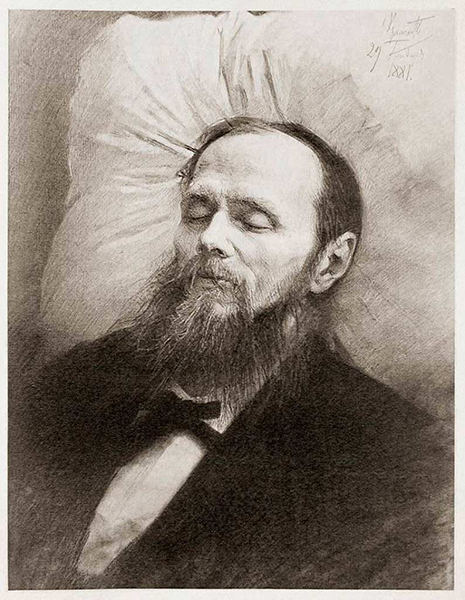
The news of Dostoyevsky’s departure soon appeared in all the papers. Crowds of people, including many students, filled the streets around his home. The procession set off to the sounds of a bell. Different church choirs were singing church hymns, and the crowd was chanting the prayer “Holy Lord.” Many thousands attended Dostoyevsky’s funeral, and in the accounts of multiple contemporaries, such massive attendance was a uniquely Russian tradition. Most schools and universities cancelled classes, and ten thousand more people were waiting to join outside the Alexander Nevsky Lavra. The windows of all the houses on the way were open, and their residents were standing by them, holding candles. Commoners who never read Dostoyevsky’s books wondered who it was – a general or a governor. When told it was a writer, they replied, “He must have written some very good books.” The procession took until two in the afternoon to reach the Church of the Descent of the Holy Spirit, so it was decided to postpone the funeral service until the next day. Until late evening, the people kept coming to pay their last tributes, taking turns to read the Psalter — one Cathisma and one line at a time. At the age of rising secularism, the people kept coming to church by the hundreds.

In the morning, so many people had arrived that the police had to step in to control access. At one point, they even denied access to the writer’s widow. They said she was the sixth woman that day who introduced herself as Dostoyevsky’s widow. His daughter wrote in her diary about the wonderful funeral service, “Archbishops conducted the service inside the church… it was dark, and a pious silence reigned…” After the service, they carried the body to the Tikhvin Cemetery, and numerous obituaries and pieces of poetry were read above his grave. The cemetery is the burial place of many other celebrities, and the stream of people visiting Dostoyevsky’s grave has not dried out to this day.
A beloved archpriest
During the last year of his life, father John of Kronstadt suffered From many illnesses, coming one after another. In his diary, he wrote, “My stamina has dried out, but my spirit is still bold and burning with love for my beloved Lord Jesus Christ, my Bridegroom in Heaven. How I wish to see the uncreated Goodness, Light, and Beauty, the infinite Wisdom and Power, the Creator, Keeper and Guardian of all things, but I have yet to prepare myself, to achieve purity of the heart.”
Father John served his last liturgy at St. Andrew’s Cathedral on 9 December. After that, he became too weak to leave his home. A priest visited him every day to give him Communion. Father John found great reassurance in the Holy Sacraments.
On 17 December, he went on a cab ride around the city and had a cold. His condition grew worse. In the evening, he asked the date, and said, as if talking to himself, “So I have three more days.” Hegumeness Angelina of the Monastery of Saint John in Saint Petersburg asked him on behalf of all its sisters to visit them on Christmas, serve liturgy and give them Communion. Father John replied, “I will come, for sure, but I will not be able to give you communion. They are also expecting me at the Synod. I will stop by there as well.”
A day later, Father John became even weaker. By the end of the next day, he could only partake of the Blood of Christ when he took his daily Communion. On the evening of 19 December, he left his last instructions. He blessed Hegumeness Angelina to consecrate the crypt at her monastery. He adamantly refused all medical assistance and had only a few drops of the holy water. Recognising the gravity of his condition, his family arranged for an early liturgy at three in the morning. An hour later, the priests brought in the Holy Gifts, and Father John took the Blood of Christ for the last time. After the Communion, he rubbed his mouth and remained perfectly calm. His last words were, “I am hot!” He was in a warm inner cassock. With a gesture, he asked for help in relieving him from the heavy clothing. His request was followed.
Then, he went into a delirium, and his breath was becoming progressively weak. The priest began to read the Office at the Parting of the Soul from the Body, and then the Prayer of the Departure of the Soul. When he finished reading, he came to the Righteous Father John. He was lying with his eyes open, with two pure tears trickling out of them. Those were the last tears of Father John, who spent his whole life praying hard for the Russian people. He departed to God early in the morning of 20 December. Involuntarily, the witnesses of his departure cried and sobbed.
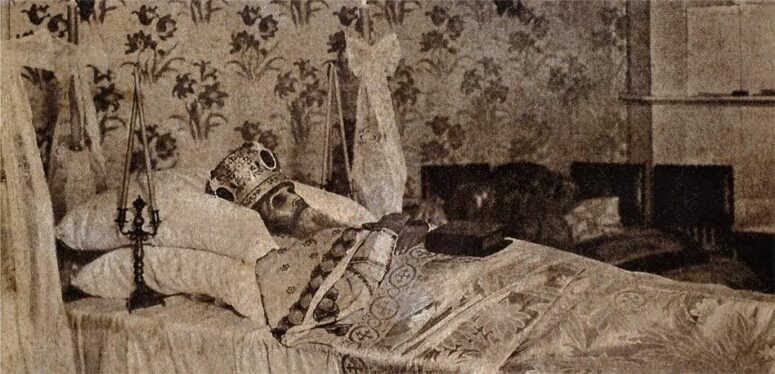
News of Father John’s death touched the hearts of many across Russia, and large numbers of people wished to attend his funeral. All the train tickets from Saint Petersburg to Kronstadt were sold out, and all the cabs, carts and sledges in Oranienbaum were occupied. They put his body inside the Cathedral of Saint Andrew, Serving liturgy and a memorial office in the morning and a parastasis in the evening. The cathedral remained open all night to let everyone bid their last farewell to Father John who wished to do so. The people were coming throughout the night. Father John willed to be interred at the convent in Saint Petersburg that he had established. His body was put on a hearth and taken across the ice to Oranienbaum, accompanied by several military orchestras playing the traditional church hymn “How Glorious is Our Lord on Zion”. Following the hearth was a procession of twenty thousand people chanting funeral hymns. On its way, the procession stopped at the cathedrals and churches and outside the building of the Holy Synod, reading short litanies and giving everyone in attendance the chance to pay their last tributes. To catch the view of their beloved father, many climbed on buildings and stood by the windows. Members of the funeral procession walked up to 25 kilometres a day.
Father John, who served in Kronstadt for 53 years was buried at the Convent at Karpovka in the presence of many thousands of people. His grave remains a major pilgrimage site for the faithful. Dying for the world, the righteous Father John was reborn for life everlasting and has performed multiple miracles for those coming to him in prayer and with goodwill.
Fyodor Dostoyevsky and John of Kronstadt were two Russian Christians whose good works during their lifetime earned them the love and appreciation of the people, which multiplied manifold after their death. Very truly I tell you, unless a kernel of wheat falls to the ground and dies, it remains only a single seed. But if it dies, it produces many seeds. (John 12:24). The example of these two righteous men confirms the all-time truth of these words.

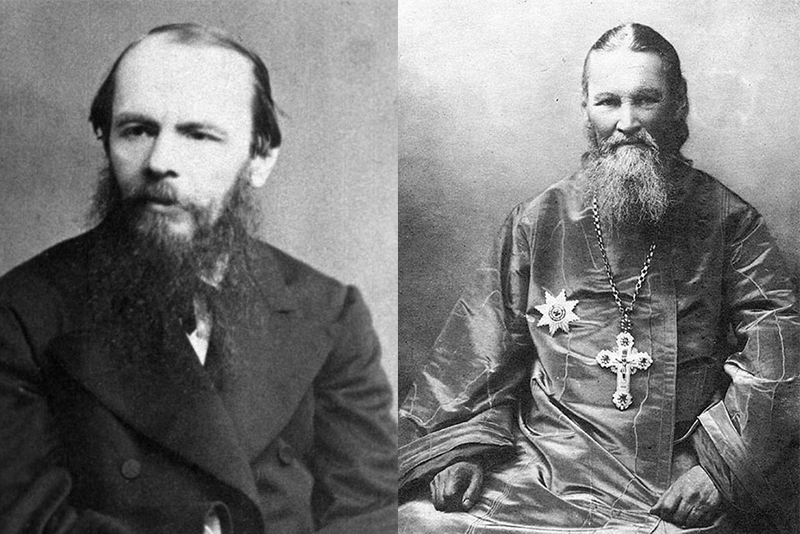
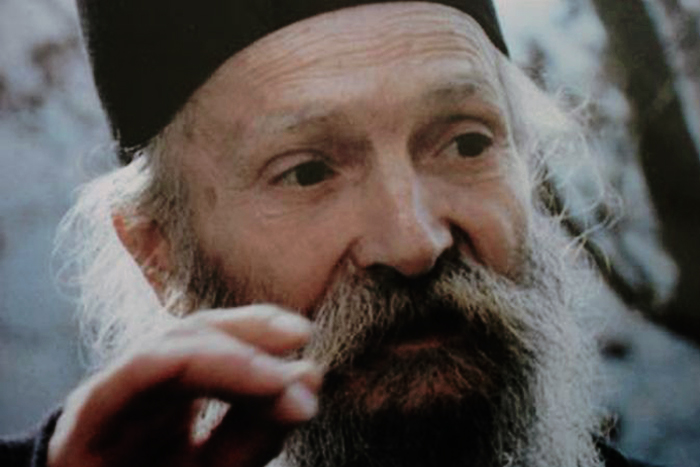
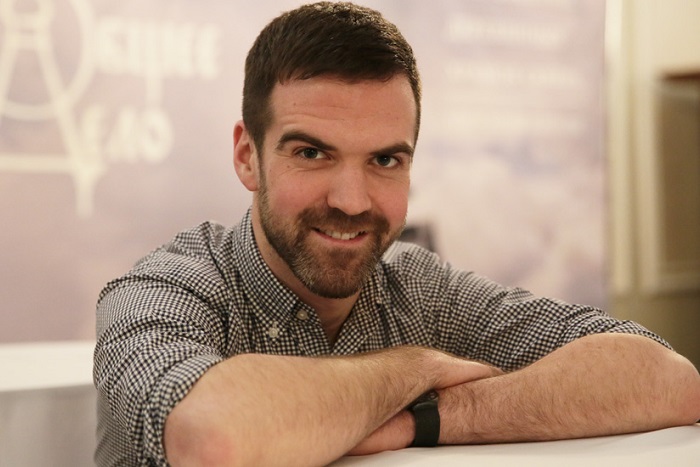
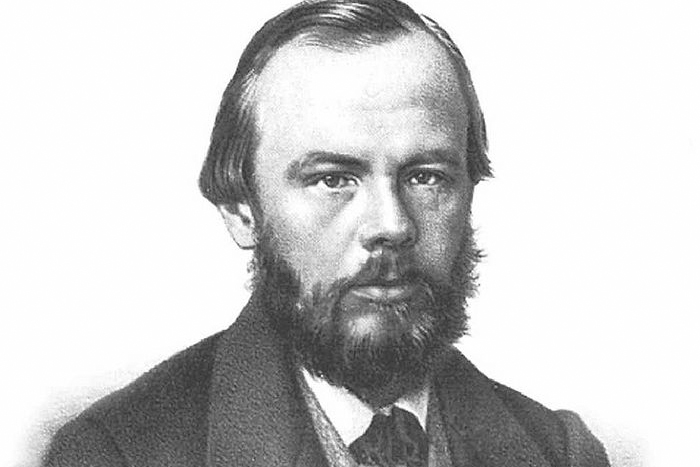
Such beauty and dignity. St John Iof Kronstadt pray for us!
I absolutely adore St John of Kronstadt. Stumbling upon his life, filled me with heavenly zeal and grace for at least 3 months. I think he is the greatest saint in the last 1000 years.